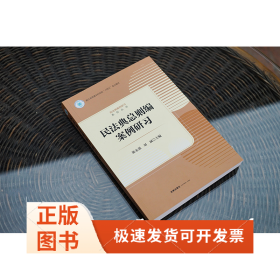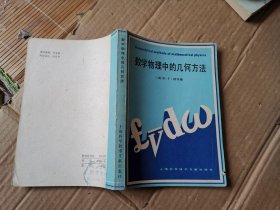
数学物理的几何方法()
全新正版 现货速发
¥ 25.3 4.4折 ¥ 58 全新
库存4件
江苏无锡
认证卖家担保交易快速发货售后保障
作者(英)舒茨 著
出版社世界图书出版公司北京公司
ISBN9787510004513
出版时间2009-06
装帧平装
开本其他
定价58元
货号1202380455
上书时间2024-12-11
- 在售商品 暂无
- 平均发货时间 9小时
- 好评率 暂无
- 最新上架
商品详情
- 品相描述:全新
- 商品描述
-
目录
1 Some basic mathematics
1.1 The space Rn and its topology
1.2 Mappings
1.3 Real analysis
1.4 Group theory
1.5 Linear algebra
1.6 The algebra of square matrices
1.7 Bibliography
2 Dffferentiable manifolds and tensors
2.1 Defmition of a manifold
2.2 The sphere as a manifold
2.3 Other examples of manifolds
2.4 Global considerations
2.5 Curves
2.6 Functions on M
2.7 Vectors and vector fields
2.8 Basis vectors and basis vector fields
2.9 Fiber bundles
2.10 Examples of fiber bundles
2.11 A deeper look at fiber bundles
2.12 Vector fields and integral curves
2.13 Exponentiation of the operator d/dZ
2.14 Lie brackets and noncoordinate bases
2.15 When is a basis a coordinate basis?
2.16 One-forms
2.17 Examples of one-forms
2.18 The Dirac delta function
2.19 The gradient and the pictorial representation of a one-form
2.20 Basis one-forms and components of one-forms
2.21 Index notation
2.22 Tensors and tensor fields
2.23 Examples of tensors
2.24 Components of tensors and the outer product
2.25 Contraction
2.26 Basis transformations
2.27 Tensor operations on components
2.28 Functions and scalars
2.29 The metric tensor on a vector space
2.30 The metric tensor field on a manifold
2.31 Special relativity
2.32 Bibliography
3 Lie derivatives and Lie groups
3.1 Introduction: how a vector field maps a manifold into itself
3.2 Lie dragging a function
3.3 Lie dragging a vector field
3.4 Lie derivatives
3.5 Lie derivative of a one-form
3.6 Submanifolds
3.7 Frobenius theorem (vector field version)
3.8 Proof of Frobenius theorem
3.9 An example: the generators ors2
3.10 Invariance
3.11 Killing vector fields
3.12 Killing vectors and conserved quantities in particle dynamics
3.13 Axial symmetry
3.14 Abstract Lie groups
3.15 Examples of Lie groups
3.16 Lie algebras and their groups
3.17 Realizations and representatidns
3.18 Spherical symmetry, spherical harmonics and representations of the rotation group
3.19 Bibliography
4 Differential forms A The algebra and integral calculus of forms
4.1 Definition of volume - the geometrical role of differential forms
4.2 Notation and definitions for antisymmetric tensors
4.3 Differential forms
4.4 Manipulating differential forms
4.5 Restriction of forms
4.6 Fields of forms
4.7 Handedness and orientability
4.8 Volumes and integration on oriented manifolds
4.9 N-vectors, duals, and the symbol
4.10 Tensor densities
4.11 Generalized Kronecker deltas
4.12 Determinants and
4.13 Metric volume elements B The differential calculus of forms and its applications
4.14 The exterior derivative
4.15 Notation for derivatives
4.16 Familiar examples of exterior differentiation
4.17 Integrability conditions for partial differential equations
4.18 Exact forms
4.19 Proof of the local exactness of closed forms
4.20 Lie derivatives of forms
4.21 Lie derivatives and exterior derivatives commute
4.22 Stokes theorem
4.23 Gauss theorem and the definition of divergence
4.24 A glance at cohomology theory
4.25 Differential forms and differential equations
4.26 Frobenins theorem (differential forms version)
4.27 Proof of the equivalence of the two versions of Frobenius theorem
4.28 Conservation laws
4.29 Vector spherical harmonics
4.30 Bibliography
5 Applications in physics A Thermodynamics
5.1 Simple systems
5.2 Maxwell and other mathematical identities
5.3 Composite thermodynamic systems: Caratheodorys theorem B Hamilton/an mechanics
5.4 Hamiltodian vector fields
5.5 Canonical transformations
5.6 Map between vectors and one-forms provided by
5.7 Poisson bracket
5.8 Many-particle systems: symplectic forms
5.9 Linear dynamical systems: the symplectic inner product and conserved quantities
5.10 Fiber bundle structure of the Hamiltonian equations C Electromagnetism
5.11Rewriting Maxwells equations using differential forms
5.12 Charge and topology
5.13 The vector potential
5.14 Plane waves: a simple example D Dynamics of a perfect fluid
5.15 Role of Lie derivatives
5.16 The comoving time-derivative
5.17 Equation of motion
5.18 Conservation of vorticity
E Cosmology
5.19 The cosmological principle
5.20 Lie algebra of maximal symmetry
5.21 The metric of a spherically symmetric three-space
5.22 Construction of the six Killing vectors
5.23 Open, closed, and flat universes
5.24 Bibliography
6 Connections for Riemnnnian manifolds and gauge theories
6.1 Introduction
6.2 Parallelism on curved surfaces
6.3 The covariant derivative
6.4 Components: covariant derivatives of the basis
6.5 Torsion
6.6 Geodesics
6.7 Normal coordinates
6.8 Riemann tensor
6.9 Geometric interpretation of the Riemann tensor
6.10 Flat spaces
6.11 Compatibility of the connection with volume-measure or the metric
6.12 Metric connections
6.13 The affine connection and the equivalence principle
6.14 Connections and gauge theories: the example of electromagnetism
6.15 Bibfiography
Appendix: solutions and hints for selected exercises
Notation
Index
内容摘要
现代微分几何在理论物理中扮演着重要的角色,并且在相对论、宇宙学、高能量物理和场论、热动力学、流体力学以及力学中的应用也日益突显。
本书作为一本微分几何教程,介绍了李导数、李群以及微分形式的引入方法,及其在理论物理中的广泛应用。
有物理和应用数学背景的读者学完本书,就可以更深入学习一些科研文献以及更高层次的纯数学理论。
相关推荐
— 没有更多了 —






















以下为对购买帮助不大的评价